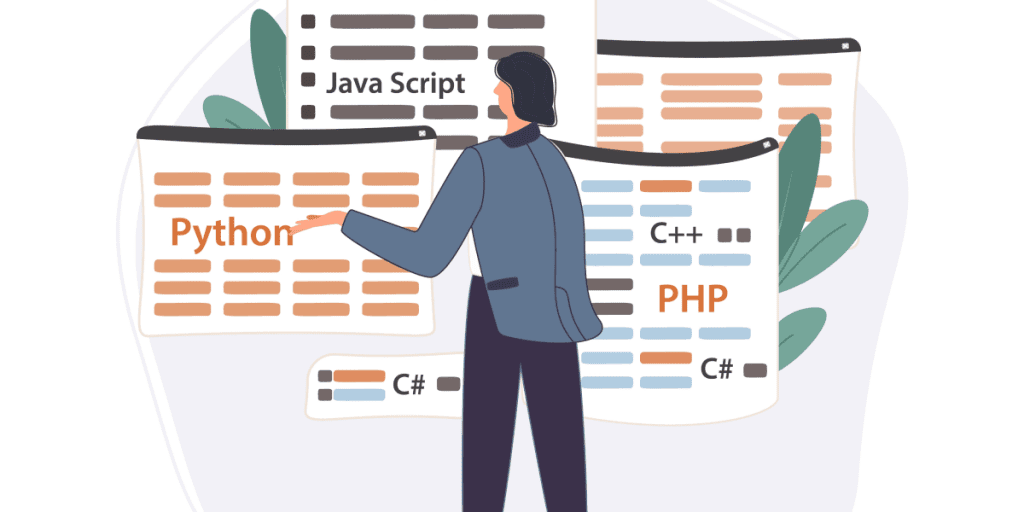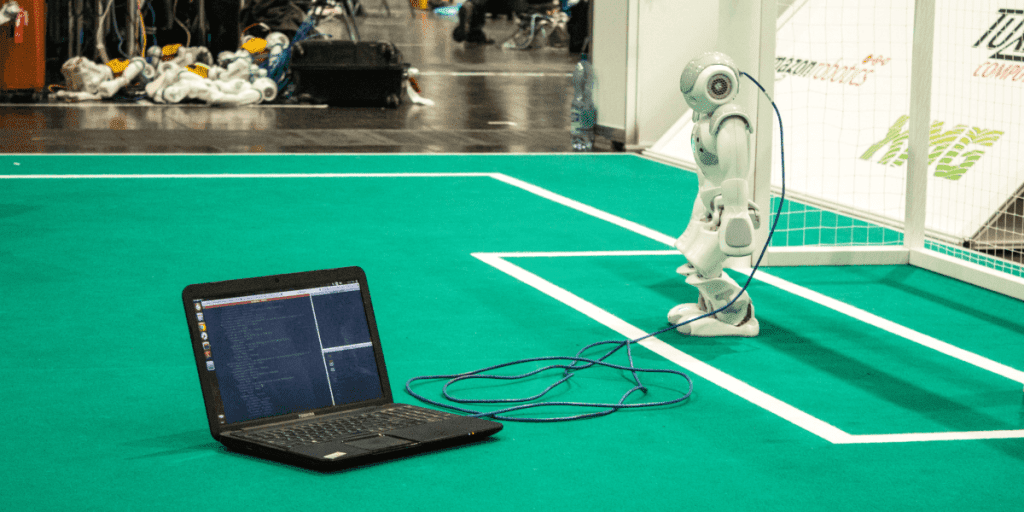The Future of Programming Languages: What to Expect in the Next 10 Years
Programming languages serve as the backbone of software development. Over the years, we have witnessed significant shifts in the landscape of programming languages, from the emergence of classics like C and Java to the rise of Python and JavaScript. It’s imperative to explore the potential trajectory of programming languages.
Programming languages constantly evolve. The following ten years will likely see even more dramatic changes. As new technologies emerge and our needs for software change, programming languages will adapt accordingly. What innovations, languages, and paradigms can we anticipate shaping the next ten years of software development? We will explore more in this article, so follow along for all the information you need.
What Are Programming Languages?

A programming language is a system of notations for writing computer programs. The majority of programming languages are text-based formal languages. In some cases, they may also be graphical. Programming languages are a type of computer language, and they are used to create instructions that computers can follow to perform tasks. These instructions create anything from a simple website to a complex video game.
Many different programming languages are in use today, each with its own strengths and weaknesses that serve as a bridge between human thoughts and computer execution.
Programming languages have some key points:
- Syntax and semantics. Syntax refers to the rules governing the structure of the language (punctuation, keywords, and grammar). Semantics define the meaning of the language constructs.
- Abstraction. Programming languages provide a level of abstraction that allows developers to express complex operations in a more human-readable and manageable form. Developers can work with higher-level concepts without understanding all the low-level details of how computers operate.
- Compiled languages. These languages are translated into binary code, also known as machine code, before execution. The resulting program is faster as it communicates directly with the computer hardware. C, C++, and Rust are compiled languages.
- Interpreted languages. These languages are translated on the fly by an interpreter at runtime. This allows more flexibility but can be slower than compiled languages. Python, JavaScript and Ruby are interpreted languages.
- Portability. Portability means the same code can run on different computer systems without modification. Java is a notable example of a portable language.
- Paradigms. Paradigms are approaches or philosophies to structure the code. Common paradigms include procedural, object-oriented structures, functional languages, and declarative programming.
- Application areas. Different languages are suited for various tasks. Python, for example, is widely used in data science and web development, while C is often used for system-level programming.
- Evolution and development. Programming languages evolve over time, and new languages are developed to address specific needs based on advancements in hardware and changes in programming paradigms.
- Community and ecosystem. Each language has a community of developers who contribute libraries, frameworks, and tools that extend the language’s capabilities. These resources can significantly enhance a developer’s productivity.
- Error handling. Languages have mechanisms for detecting and handling errors. This might include syntax errors such as typos or runtime errors such as dividing by zero.
- Learning and education. Different programming languages are used in education for various purposes. Some are preferred for their simplicity in teaching basic concepts. At the same time, others are used to introduce more complex programming concepts.
Current Trends in Programming Languages

The software development landscape is changing rapidly, and keeping up with the latest trends is imperative. Technology continues pushing boundaries, and programming languages adapt and evolve to meet the demands of an increasingly complex digital world.
Let’s explore the current trends in programming languages:
- DSLs (domain-specific languages) are designed for specific tasks or domains. From web development and data science to machine learning, DSLs can be more concise and expressive than general-purpose programming languages, making them more efficient and easier to use for certain tasks.
- Low-code and no-code development platforms allow people to create software applications without writing code. These platforms make software development more accessible to a wider range of people and lead to the development of new programming languages designed explicitly for low-code or no-code development.
- Artificial Intelligence (AI) and machine learning (ML) are used to develop new languages, and they will have a powerful impact on accelerating the evolution of software development in the next 10 years.
- Security and reliability are another trend growing in popularity. As software becomes complex and critical to our lives, there is a growing need for programming languages that are secure and reliable. We expect to see more languages designed with security and reliability in mind.
Moreover, another growing interest in programming languages focuses on:
- Concurrency and parallelism. Software becomes more complex and distributed, and programming languages are required to support concurrency and parallelism. This means that programs can run multiple simultaneously to improve performance and scalability.
- Declarative programming. This type of development allows programmers to specify what they want the program to do rather than how to do it. This can make development more efficient and easier to understand.
- Safety and correctness. Various software solutions have become more prevalent in our daily lives, and there is a growing need for programming languages that can help software developers write safe and correct code. This includes features such as type checking, static analysis, and formal verification.
Emerging Technologies and Their Impact on Programming Languages

The emerging technologies significantly impact programming languages which are being developed to support them. The rise of artificial intelligence and machine learning has led to the development of new programming languages that are specifically designed for developing AI and ML applications.
- AI and ML are being used to develop new programming languages that generate code, optimise code, and detect and fix bugs in code. This is making coding more efficient and less error-prone.
- The Internet of Things (IoT) has led to the development of programming languages that are specifically designed for developing IoT applications.
- Blockchain is a distributed ledger technology that is used to create secure and tamper-proof records of transactions. Programming languages are adjusting to support blockchain applications.
- Quantum computing is harnessing quantum mechanics’ power to solve problems intractable for classical computers. This is still an early-stage technology.
- Moreover, the increasing popularity of cloud computing and microservices has led to the development of programming languages that allow the development and deployment of cloud-based and microservices-based applications.
Here are some examples of programming languages that have adapted to support the emerging technologies:
- Python is a general-purpose programming language that is popular for developing AI and ML applications. Because it has a number of libraries and frameworks specifically designed for AI and ML tasks, Python is the number one choice for this type of application.
- Julia is a high-performance programming language that is very popular for developing AI and ML applications, and it is known for its speed and efficiency.
- TensorFlow is a Google-developed open-source software library for numerical computations using data flow graphs. This language is used for training and deploying machine learning models.
- PyTorch is a Torch-based open-source machine learning framework primarily used for NLP (natural language processing) research and prototyping.
- Rust is a multi-paradigm, general-purpose programming language designed for performance and safety. This language is gaining popularity for developing IoT and blockchain applications.
- Solidity is a programming language used to create smart contracts on the Ethereum blockchain platform.
The impact of emerging technologies had a profound influence on the development and evolution of programming languages such as:
- The impact of AI and ML is to drive the development of specialised libraries and frameworks within existing languages, such as TensorFlow for Python, and the rise of new languages, like Julia, that are optimised for high-performance numerical computing.
- The impact of Blockchain and platforms like Ethereum have encouraged the rise of languages like Solidity, specifically designed for writing smart contacts. These contacts are integral to decentralised applications (DApps) and the broader blockchain ecosystem.
- The impact of IoT applications involves a diverse range of hardware and devices. Languages like C and C++ are relevant due to their efficiency and ability to interact directly with hardware. Python is also popular for IoT development because of its simplicity and wide-ranging libraries.
- The impact of augmented reality (AR) and virtual reality (VR) involves specialised frameworks and languages. Unity (C#) and Unreal Engine (C++) dominate AR and VR development, while languages like JavaScript (with A-frame) are used for web-based AR experiences.
- The impact of quantum computing requires specialised languages due to its unique computational model. Languages like Qiskit (for IBM’s quantum computers) and Microsoft’s Quantum Development Kit (Q#) have emerged to facilitate quantum development.
- The impact of edge computing involves processing data closer to the source to reduce latency. Lightweight and efficient languages such as Rust and Go are popular programming languages for developing applications in edge computing environments.
- The impact of natural language processing (NLP) applications use popular languages such as Python. This is the go-to language due to libraries like NLTK, spaCy, and Hugging Face’s Transformers to facilitate tasks like analysis, language translation, and chatbot development.
- The impact of serverless computing allows developers to focus on code. Languages like JavaScript/Node.js, Python, and Go are popular choices for serverless functions due to their lightweight nature.
- The impact of 5G high-speed, low-latency connectivity enables real-time applications and services. To handle concurrent operations efficiently, Go is the most prevalent choice.
- The impact of AR/VR browsers and WebXR have led to keeping JavaScript as the main language used to build immersive web experiences.
- The impact of secure coding and cybersecurity requires robust security features, and Rust is gaining traction for system-level programming to mitigate vulnerabilities.
- The impact of digital twins involves creating a digital representation of a physical object or system. The system uses languages to facilitate 3D modelling and simulations, and C++ with libraries such as OpenGL are relevant to this context.
The Rise of Domain-Specific Languages (DSLs)

When discussing future programming languages, we must address the rise of domain-specific language. DSLs are specially designed to be more concise and expressive than general-purpose programming languages, making them more efficient and easier to use for certain tasks. They become increasingly popular as the software industry matures and as the need for more specialised software solutions increases. DSLs are used to develop software for various domains, such as web development, data science, machine learning, natural language processing, embedded systems, game development and financial services.
DSLs are implemented as external compilers or interpreters, while others are implemented as libraries or frameworks within general-purpose languages. One advantage of DSLs is that they can make software development more accessible to non-developers. They can allow designers to create websites without learning to write code in a general-purpose language. Another advantage is that they can improve the quality of the software. Because DSLs are designed for specific tasks, developers can avoid common mistakes and produce more robust and efficient code.
Nowadays, DSLs are used in:
- HTML is aDSL for creating website pages;
- SQL is a DSL for querying and manipulating databases;
- CSS is a DSL for styling web pages;
- JavaScript is a DSL for adding interactivity to web pages.
Moreover, domain-specific language is focused on:
- Problem-solving through targeted domains such as data science, finance, gaming, hardware description, and configuration management; and simplified syntax that allows experts in the domain to write code that directly addresses their specific issues.
- Productivity and expressiveness through a higher abstraction level allow users to express complex operations more naturally and intuitively and reduce boilerplate code by making them more concise and focused.
- Communication between domain experts and developers through providing a language that closely mirrors the domain concepts.
- Code readability and maintainability through domain-specific abstractions that make the code more readable and easier to maintain for domain experts. Moreover, the cognitive load is reduced because understanding and navigating through irrelevant code is minimised.
- Specialised tooling and libraries through tailored libraries and tooling that cater specifically to the needs of the domain, further enhancing productivity. Moreover, integrating with general-purpose languages allows developers to leverage existing libraries and frameworks.
We want to mention some notable DSLs that are growing in popularity:
- Structured Query Language (SQL) for querying and managing databases that are designed to interact with relational databases.
- LaTeX is a typesetting system that provides a DSL for producing high-quality documents, especially in academia and publishing.
- Regular Expressions are not a full-fledged language but are a DSL for pattern matching within strings.
- Verilog and VHDL are hardware description languages used for designing electronic systems.
- YAML and JSON are configuration languages that provide a way to represent data in a human-readable format used in configuration files.
It is important to mention the challenges regarding DSLs. Therefore, the learning curve can be a little of a challenge as developing and using them may require some learning for both domain experts and developers. Moreover, careful design and documentation are necessary to ensure that DSLs remain effective and maintainable over time.
The rise of Domain-Specific Languages reflects the growing recognition of the importance of tailoring coding languages to specific problem domains as they offer a powerful tool for addressing complex issues in a more focused and efficient manner.
Conclusion: The Future of Programming Languages: What to Expect in the Next 10 Years
The future of programming languages is bright as new technologies and new needs are driving the development of new languages more powerful, efficient and reliable. Over the next decade, we anticipate several key trends and developments that will shape how we create software and interact with digital systems.
The multi-faceted language ecosystem will continue diversifying, catering to an increasingly tailored array of domains. From quantum computing to augmented reality, languages will be customised to address specific needs, reflecting technological applications’ growing complexity and diversity.
We will see an emphasis on simplicity, performance and safety, enabling developers to express ideas with clarity. Applications will demand higher efficiency and safety features, which will be paramount in addressing security concerns and minimising vulnerabilities in an interconnected world.
The integration of AI-powered tools and libraries will become integral components of programming languages. Developers will be empowered with advanced capabilities for tasks such as natural language processing, computer vision, and recommendation systems. These integrations will streamline the development process and unlock new possibilities in AI-driven applications.
The advancement of quantum computing enables programming languages to specialise and be optimised for quantum systems. These languages will allow developers to harness the power of quantum processors, transforming industries ranging from cryptography to materials science.
Ethical considerations will play a key role in language development. Inclusivity, accessibility and responsible AI will become focal points, ensuring that programming languages are designed with fairness, transparency and social impact in mind. The commitment to ethics will shape the future of technology in a more equitable manner.
Community-driven development will continue to thrive, with open-source projects leading the way. Collaborative efforts will innovate languages, libraries, and frameworks, fostering an ecosystem that encourages knowledge-sharing and collective problem-solving.
The flexibility to adapt to emerging technologies is rising. Whether we talk about blockchain, edge computing, or new paradigms, languages will provide the foundation for innovation in a rapidly changing technological landscape.
In the next 10 years, the world of programming languages and software development will be characterised by diversity, innovation, and a steadfast commitment to ethical development. These languages will serve as building blocks for a future where technology empowers us to tackle complex challenges. Embracing these trends will be essential for developers and organisations seeking to succeed in this era of technological advancement.
Frequently Asked Questions
JavaScript, Python, Rust, Kotlin, Swift.
AI and machine learning are influencing the development of tools that can auto-generate code, offer intelligent code suggestions, and automate low-value tasks of the software development process.
Yes, there’s a trend towards domain-specific languages (DSLs) tailored for specific industries or problem domains.
Programming languages will likely integrate more robust security features, such as built-in support for secure coding practices and memory safety, to help prevent common vulnerabilities.